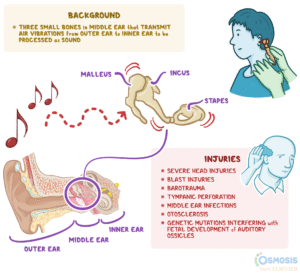Physical Therapist Training, Expertise, and Specialities
Understanding the Role of Physical Therapists
Physical therapists (PTs) are highly trained healthcare professionals dedicated to improving patients’ mobility and quality of life. They address injuries, disabilities, or medical conditions that impair movement through customized treatment plans. These plans often combine targeted exercises, hands-on techniques, and advanced modalities like ultrasound or electrical stimulation. PTs, sometimes called physiotherapists, also focus on injury prevention, helping individuals maintain optimal physical function.
Path to Becoming a Physical Therapist
To practice as a physical therapist, individuals must earn a Doctor of Physical Therapy (DPT) degree, which typically requires three years of specialized training. Admission to DPT programs, accredited by the Commission on Accreditation in Physical Therapy Education (CAPTE), often demands a bachelor’s degree with coursework in anatomy, physiology, biology, chemistry, and physics. Some programs offer combined bachelor’s and DPT tracks, spanning six to seven years.
All U.S. states mandate licensure, which involves passing the National Physical Therapy Examination administered by the Federation of State Boards of Physical Therapy (FSBPT). PTs must also pursue continuing education to maintain their licenses. While optional, many seek board certification from the American Board of Physical Therapy Specialties (ABPTS) to specialize in areas like orthopedics or neurology.
What Physical Therapists Treat
Physical therapists are equipped to manage a wide range of conditions, as outlined by the American Physical Therapy Association (APTA). These include:
-
Musculoskeletal issues like back pain, arthritis, and joint replacements
-
Sports injuries, such as ACL tears or rotator cuff injuries
-
Neurological conditions, including stroke, Parkinson’s disease, and multiple sclerosis
-
Post-surgical recovery, fractures, and amputations
-
Chronic conditions like lymphedema, carpal tunnel syndrome, and sciatica
-
Pelvic health disorders and neurodegenerative diseases
PTs assess patients using tools like the Lower Extremity Functional Scale (LEFS) or Neck Disability Index (NDI) to create tailored treatment plans. While they cannot diagnose diseases or prescribe medications, PTs evaluate how conditions affect mobility and strength, collaborating with physicians when needed.
Benefits of Physical Therapy
Working with a physical therapist can yield significant improvements, such as:
-
Enhanced mobility and daily function
-
Reduced pain and management of chronic conditions
-
Avoidance of surgery or reliance on medications
-
Improved physical fitness and resilience
-
Prevention of future injuries
Therapy can take place in diverse settings, including private clinics, hospitals, nursing homes, or patients’ homes. Many regions allow “direct access,” enabling patients to consult PTs without a physician’s referral, though PTs operate within defined scope-of-practice boundaries.
Techniques and Modalities in Physical Therapy
PTs employ a variety of techniques to restore function and alleviate pain. Common approaches include:
-
Therapeutic Exercises: Stretching, resistance training, and isometric exercises to build strength and flexibility.
-
Ultrasound Therapy: High- or low-frequency sound waves to promote tissue relaxation and circulation.
-
Electrical Stimulation: Gentle currents to enhance muscle strength and support healing.
-
Kinesiology Taping: Specialized tape to reduce pain and improve muscle awareness.
-
Manual Therapies: Techniques like joint mobilization, myofascial release, and massage to relieve tension and improve mobility.
-
Hydrotherapy: Whirlpool treatments to manage inflammation and enhance circulation.
-
Thermal Therapies: Heat or cold applications to reduce stiffness, swelling, or pain.
These interventions are tailored to each patient’s needs, ensuring effective recovery and rehabilitation.
Physical Therapy Specializations
After licensure, PTs can pursue board certification in one of nine specialties recognized by the ABPTS. This requires at least 2,000 hours of clinical practice or completion of an accredited residency, followed by a certification exam. Specialties include:
-
Cardiovascular & Pulmonary: Focused on cardiac and pulmonary rehabilitation for conditions like COPD or post-heart attack recovery.
-
Orthopedics: Addressing musculoskeletal injuries, such as fractures or joint dislocations.
-
Neurology: Supporting patients with conditions like stroke or muscular dystrophy.
-
Sports: Treating athletic injuries and enhancing performance.
-
Pediatrics: Working with children to address developmental or congenital conditions.
Career Outlook and Earnings
The demand for physical therapists is growing, with the Bureau of Labor Statistics projecting a 14% increase in PT jobs by 2033. In 2023, approximately 259,200 PTs were employed in the U.S., earning a median annual salary of $99,710. Salaries varied by setting, with home healthcare PTs earning $107,870 annually and those in private practices averaging $93,050. Hourly rates typically exceed $50, reflecting the profession’s value in healthcare.
Why Choose Physical Therapy?
Physical therapy offers a pathway to regain independence and improve well-being without invasive procedures. By combining evidence-based techniques with personalized care, PTs empower patients to overcome physical challenges and achieve lasting health benefits. Whether recovering from an injury or managing a chronic condition, physical therapy is a vital resource for enhancing movement and quality of life.
💡 Frequently Asked Questions
Getty Pics
What Do Bodily Therapists Do?
Answer coming soon. We are working on detailed responses to this common question.
What Can PTs Deal with?
Answer coming soon. We are working on detailed responses to this common question.
How Considerably Do Bodily Therapists Crank out?
Answer coming soon. We are working on detailed responses to this common question.
⭐ Expert Tips
- Include seasonal or trendy variations to keep your meals exciting.
- Highlight prep shortcuts or time-saving techniques for busy cooks.
- Consider dietary restrictions and include substitution suggestions.
✅ Key Takeaways
- These dinner ideas are perfect for impressing guests or enjoying special occasions.
- Choose recipes that match your skill level and available kitchen tools.
- Presentation and taste both contribute to a memorable dining experience.
📣 Join Our Community
Want more inspiration like this? Subscribe to our newsletter for weekly dinner ideas and cooking tips!











